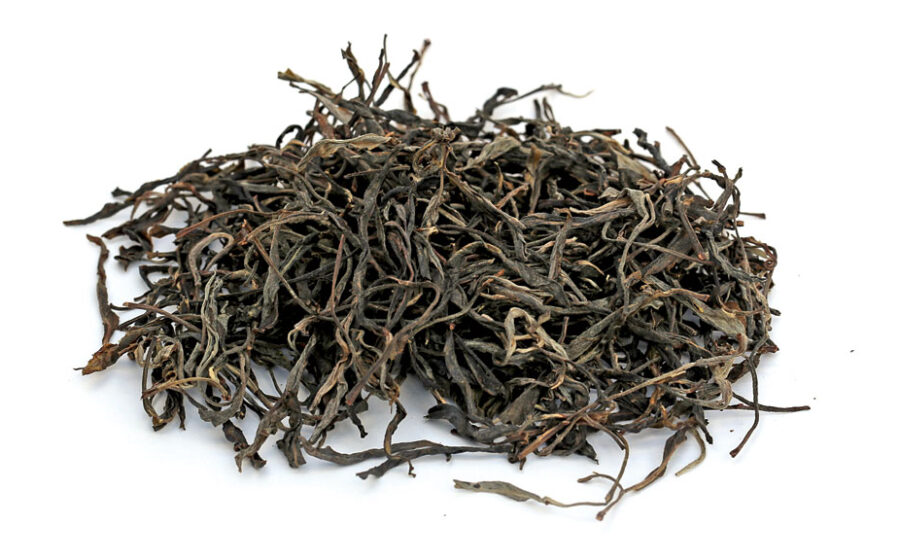[A]s tea makes leaps and bounds in the North American market, coffeehouses have started to focus on upping their tea quality. At most cafés, there are often a few selections for customers to choose from to fancy their thirst for tea, with blacks, greens, and even oolongs represented. However, the avid tea drinker is often disappointed that a great pu-erh is missing from the list.
Pu-erh, an aged and fermented tea, may be intimidating to café owners and new tea drinkers, but it is not completely different from other teas. Sure, it comes in shapes that are different from the standard loose leaf teas, but it still carries the beautiful aromas and sweet mouthfeel of other great teas. Though its own category of tea, pu-erh is still just tea.
When adding pu-erh to a menu, it is most certainly going to fall under a premium or signature tea section of the menu. The mystique and culture of the tea should not be withheld from the description. Adding a note alongside the tea like, “World’s first cultivated tea, picked by hand from ancient tea trees,” will absolutely inspire patrons to try the tea.
We often see this tea brewed with traditional Chinese teaware and methods, but that’s not required. There are tea farmers and masters who prefer to drink the tea by simply tossing a spoonful in a mug of hot water—nothing exotic, romantic, or cost prohibitive there.
A unique experience, not just the taste or feeling the tea gives us, is why customers go back to the same shop and invite their friends.
For shops, it is just as simple. First, it is best to heat the water to about 190 degrees, then place the tea at the bottom of the pot and either brew it for the customer, or give them a separate cup of hot water and cups for each person at the table so that they may enjoy the brewing themselves. Pu-erh tea is known for having big leaves that can be re-brewed a dozen times, so it’s best if the staff can circle back every ten minutes or so and refill the pot with hot water. But even if the leaf is brewed just once, it will be an enjoyable cup for the customer.
Many shops are giving their patrons a few options when ordering. First, they offer a simple cup of pu-erh for, say, three dollars. The second is a pot of pu-erh tea for five dollars, then adding a dollar or two for each additional cup. The tea may be on the pricier side for some shops and customers, but it’s important to promote the experience and the fact that the leaves may be rebrewed at least a dozen times. Now, instead of a customer having a cup of tea for two or three dollars, they are investing a little more and getting several more pots of tea.
A unique experience, not just the taste or feeling the tea gives us, is why customers go back to the same shop and invite their friends. Pu-erh is known not just as a tea in China, but also as a lifestyle, and this translates to us whether we intend it to or not. The feeling one gets from holding a warm mug in their hand is that much more memorable when they have a steaming pot alongside it. Knowing it can be refilled at no cost amplifies that experience again.
Pu-erh has been called the bridge between coffee and tea drinkers because of its deep color and flavors.
Storing the tea leaves is very similar to storing coffee beans in that we do not want too many odors nearby. Pu-erh is unique in that it doesn’t have a shelf life, it actually gets better with time. This is a huge asset for the tea as every other tea quickly loses flavor and quality. Because pu-erh can be aged, it’s easy to get overwhelmed reading about different storage techniques for pu-erh, but it is rather simple, especially when only a couple of pounds are being stored. This is your storage commandment: thou shalt keep the tea in a standard glass or tin container, away from the elements, and not in direct sunlight.
Pu-erh often comes loose, which is more user friendly, or compressed, which is more eye-catching. Teashops, and even coffeehouses, should display at least one or two compressed bings in their shop because they are beautiful and tempting to customers, but when serving, loose is preferable.
As more and more shops are asked for pu-erh by their patrons, it is important for them to have a stock of one or two high quality options for their serious tea drinkers. Pu-erh has been called the bridge between coffee and tea drinkers because of its deep color and flavors. People also treat dark pu-erh much the same as coffee by adding milk and sugar and using it as a drink to enjoy at breakfast. When sourcing a pu-erh, it is absolutely critical to start with a higher quality tea so that the tea is really given a chance to be enjoyed and re-ordered.
The margins are great and there is very little labor involved for the staff. The tea is also known for increasing the appetite, so be ready if they ask for a pastry to go with it! Cold-brew coffee and matcha required time to catch on, but look at them now. And matcha does require extra work, but the outcome is worth the effort. Pu-erh, remember, is still just leaves and hot water. From there it is unique.
—Nicholas Lozito is the owner of Misty Peak Tea, a one-farm pu-erh company.
















